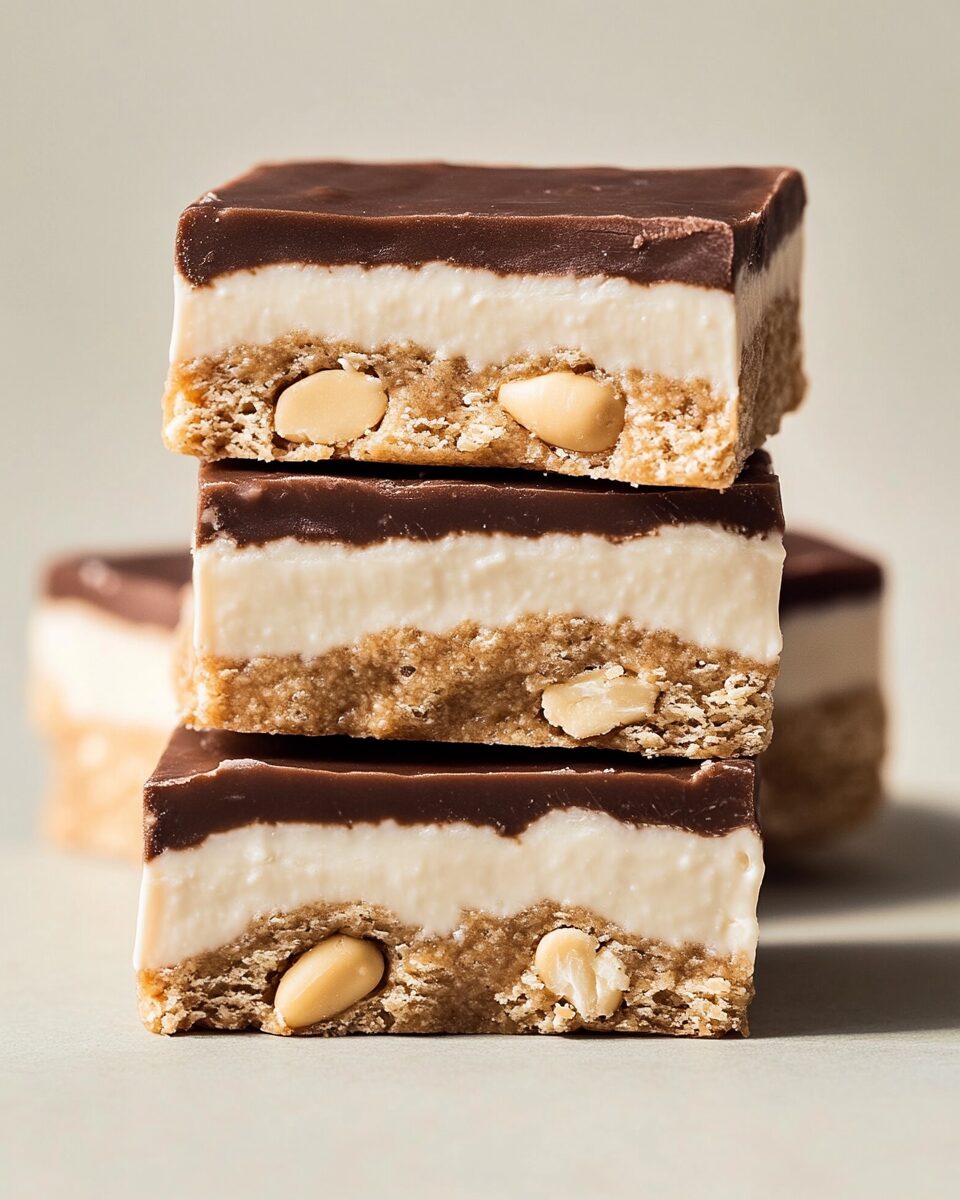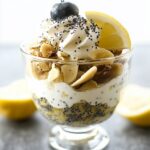Homemade protein bars are a delicious and nutritious way to fuel your body. These bars are easy to make, customizable, and packed with protein, making them perfect for a quick breakfast, post-workout snack, or healthy treat. Unlike store-bought protein bars, this homemade version lets you control the ingredients, ensuring a clean and wholesome snack without unnecessary additives or preservatives.
FULL RECIPE:
Ingredients
- 1 cup protein powder (vanilla or chocolate)
- 1/2 cup peanut butter or almond butter
- 1/4 cup honey or maple syrup
- 1/4 cup milk of choice (dairy or non-dairy)
- 1 teaspoon vanilla extract
- 1/8 teaspoon salt
- 1/2 cup chocolate chips (optional)
Directions
- In a mixing bowl, combine the protein powder, peanut butter, honey, milk, vanilla extract, and salt.
- Stir until the mixture forms a thick dough. If the dough is too dry, add a little more milk, one teaspoon at a time, until it reaches the desired consistency.
- If using chocolate chips, fold them into the mixture.
- Press the dough evenly into a parchment-lined baking dish.
- Refrigerate for at least 30 minutes or until firm.
- Once set, cut into bars and store in an airtight container in the refrigerator.
Nutrition Facts (Per Bar)
- Calories: 180
- Protein: 12g
- Carbohydrates: 15g
- Fat: 8g
- Fiber: 2g
- Sugar: 7g
- Sodium: 90mg
Why Homemade Protein Bars Are a Game-Changer
Homemade protein bars have become a staple for fitness enthusiasts, busy professionals, and anyone looking for a quick yet nutritious snack. Unlike commercial protein bars, which often contain artificial sweeteners, preservatives, and unnecessary fillers, making your own allows full control over the ingredients. This means you can tailor the flavor, texture, and nutritional content to fit your dietary needs.
Health Benefits of Protein Bars
Protein bars are more than just a convenient snack; they offer a range of health benefits:
- Muscle Growth and Recovery – Protein is essential for repairing and building muscle tissue, making protein bars an excellent post-workout snack.
- Sustained Energy – The combination of protein, healthy fats, and carbohydrates ensures a steady release of energy throughout the day.
- Weight Management – Protein increases satiety, helping to reduce cravings and prevent overeating.
- Nutrient-Dense – Homemade bars contain natural ingredients like nut butters, oats, and seeds, which provide essential vitamins and minerals.
- Digestive Health – Adding fiber-rich ingredients such as chia seeds, flaxseeds, or oats promotes a healthy digestive system.
Customizing Protein Bars to Your Dietary Needs
One of the biggest advantages of making protein bars at home is the ability to customize them. Depending on your dietary goals, you can modify the recipe to suit your preferences:
- For High-Protein Needs – Use high-quality protein powders, Greek yogurt, or egg whites to boost the protein content.
- For a Low-Carb Version – Replace honey or maple syrup with a sugar substitute like stevia or monk fruit sweetener.
- For Vegan or Dairy-Free Diets – Choose plant-based protein powder and dairy-free milk alternatives.
- For Extra Fiber – Add flaxseeds, chia seeds, or psyllium husk for a fiber boost.
- For a Chocolate Lover’s Option – Mix in cocoa powder, dark chocolate chips, or melted chocolate for a rich flavor.
Best Storage Practices for Homemade Protein Bars
To maintain freshness and texture, store protein bars properly:
- Refrigeration – Keeps bars firm and extends shelf life up to a week.
- Freezing – Ideal for long-term storage; bars can last up to three months when individually wrapped and placed in an airtight container.
- Room Temperature – If ingredients are shelf-stable, bars can be stored in an airtight container for 2-3 days.
When to Eat Protein Bars
Protein bars can be consumed at various times throughout the day, depending on your nutritional goals:
- Pre-Workout – Provides energy and prevents muscle breakdown.
- Post-Workout – Aids in muscle recovery and replenishes glycogen stores.
- Breakfast Replacement – A quick, nutrient-dense option for busy mornings.
- Midday Snack – Helps curb hunger and sustain energy levels.
- Evening Treat – Satisfies cravings while offering a nutritious alternative to sugary snacks.
Common Mistakes When Making Protein Bars
Even with a simple recipe, a few mistakes can impact the texture and taste of homemade protein bars:
- Using Too Much or Too Little Liquid – Too much can make bars sticky and difficult to set, while too little can result in crumbly bars.
- Skipping Refrigeration – This step helps solidify the bars and improves texture.
- Overloading with Sweeteners – Natural sweeteners are great, but excessive amounts can spike blood sugar levels.
- Not Pressing the Mixture Firmly – Ensures bars hold their shape and don’t fall apart.
- Using Low-Quality Protein Powder – Affects taste and consistency; opt for a high-quality brand.
Why You Should Make Protein Bars at Home
There are several reasons why homemade protein bars are better than store-bought alternatives:
- Cost-Effective – Pre-packaged bars can be expensive, but making them at home saves money.
- No Artificial Additives – Homemade versions use wholesome, natural ingredients.
- Customizable – Adjust the flavor, sweetness, and texture according to personal preferences.
- Better Taste – Freshly made bars often taste better than mass-produced options.
Conclusion
Homemade protein bars are a versatile, nutritious, and delicious snack option. Whether you need a quick breakfast, an energy-boosting snack, or a post-workout recovery treat, these bars are a perfect fit. With endless customization possibilities, they cater to different dietary needs and preferences while ensuring a healthier alternative to store-bought varieties. Making your own protein bars guarantees that you’re consuming high-quality ingredients without unwanted additives, making them a smart choice for anyone looking to maintain a balanced diet.






